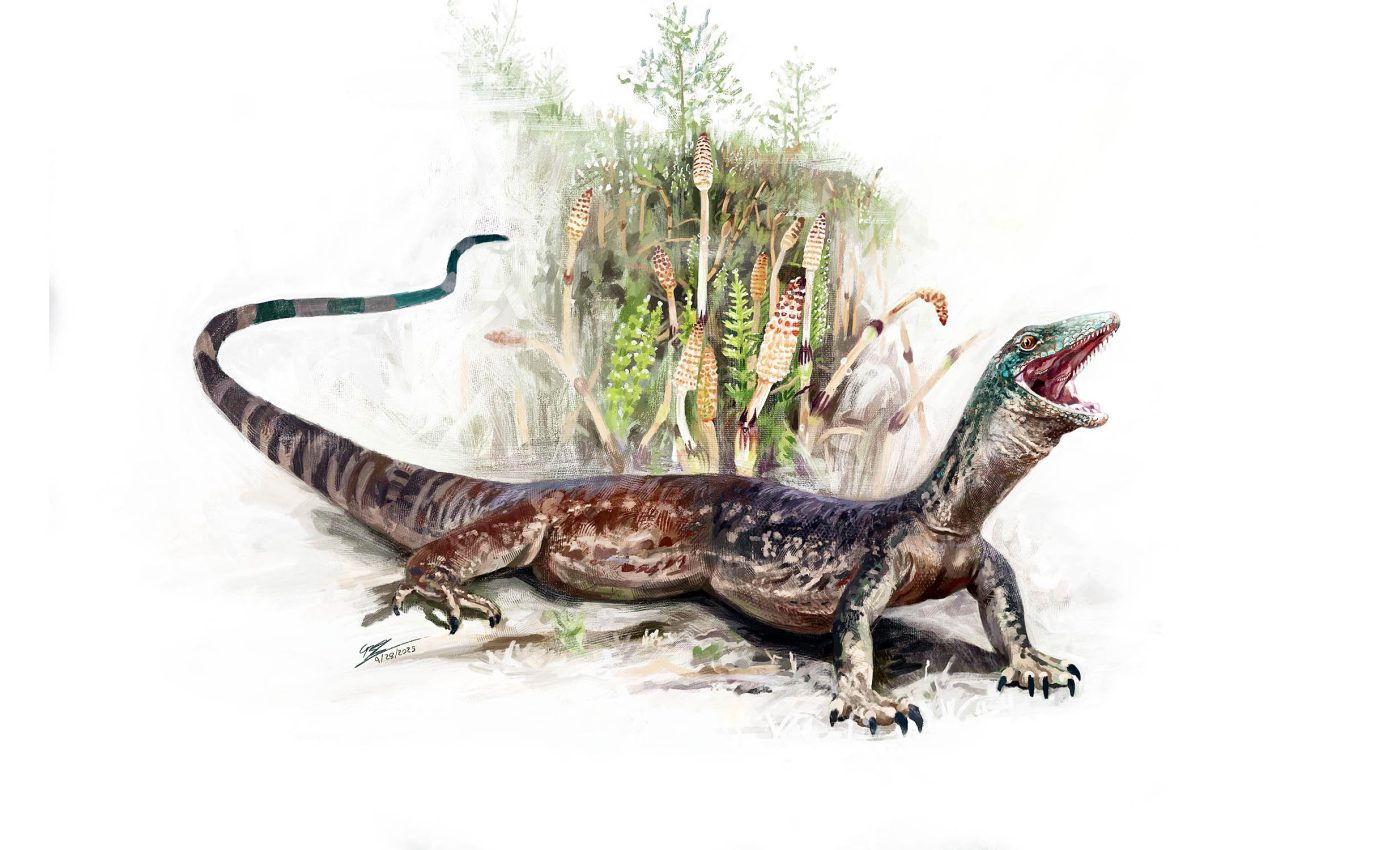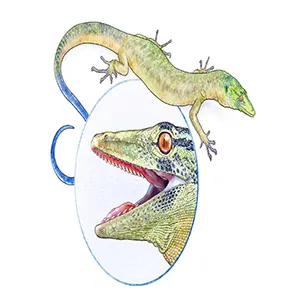
Jurassic reptilian creature shared features of both snakes and lizards
Around 167 million years ago, a peculiar lizard-like creature, eventually named Breugnathair elgolensis, walked and slithered around Earth.
Scientists recently announced the discovery of this new species – one of the oldest, relatively complete lizard specimens ever uncovered.
What makes this Jurassic creature extraordinary is its puzzling combination of snakelike and geckolike traits, blending features from two very different relatives.
The study comes from a team including the American Museum of Natural History (AMNH), University College London (UCL), National Museums Scotland (NMS), and partners in France and South Africa.
Their discovery sheds new light on reptile evolution during the Jurassic period.
Naming Breugnathair elgolensis
The species was named Breugnathair elgolensis, Gaelic for “false snake of Elgol.” It honors the Isle of Skye in Scotland, where the fossil was found.
Breugnathair displayed snakelike jaws and hooked, curved teeth similar to those of pythons, yet retained a short body and fully developed limbs.
“Snakes are remarkable animals that evolved long, limbless bodies from lizard-like ancestors,” said Roger Benson, lead author and curator at the American Museum of Natural History.
Breugnathair has snakelike features in its teeth and jaws, but in other ways, it is surprisingly archaic
“This might be telling us that snake ancestors were very different to what we expected, or it could instead be evidence that snake-like predatory habits evolved separately in a extinct group,” he said.

Snake jaws, ancient body
Lizards and snakes belong to a group called squamates. Scientists placed Breugnathair elgolensis in a newly defined extinct family, the Parviraptoridae.
Researchers had previously recognized this group only from incomplete fossils.
Earlier findings led researchers to mistakenly believe snakelike and geckolike bones belonged to separate animals.
The new analysis shows they came from a single creature, revealing a mosaic of traits unseen in living groups.
Breugnathair combined head and body proportions resembling monitor lizards with snakelike teeth and jaws. At the same time, it retained ancestral traits seen in early squamate lineages such as gekkotans.
Phylogenetic tests produced conflicting results.
Some tests placed parviraptorids as early toxicoferans, potentially linked to snake ancestry. Meanwhile, others suggested they were stem squamates that independently evolved snake-like traits.
This indicates convergent evolution and a high degree of experimentation during squamate origins.
Breugnathair elgolensis‘s anatomy
Stig Walsh of National Museums Scotland, together with Benson and colleagues, discovered the fossil in 2016.
It took nearly a decade of preparation – using CT scans and powerful synchrotron X-rays – to reconstruct the skeleton in detail.
“The Jurassic fossil deposits on the Isle of Skye are of world importance for our understanding of the early evolution of many living groups, including lizards, which were beginning their diversification at around this time,” said Susan Evans from University College London.
“I first described parviraptorids some 30 years ago based on more fragmentary material, so it’s a bit like finding the top of the jigsaw box many years after you puzzled out the original picture from a handful of pieces.”
The new specimen of parviraptorids highlights a mosaic of ancestral and specialized traits, serving as an important reminder that evolutionary paths are often unpredictable.
Blend of lizard and snake features
Breugnathair elgolensis had strong limbs, a short vertebral column compared to snakes, and skull proportions similar to those of modern varanids and mosasaurs.
Bone histology revealed slow, cyclical growth, with the individual likely reaching skeletal maturity after nearly a decade. This pattern mirrored growth in monitor lizards, suggesting longevity and slow maturation.
Its skull also displayed unusual features: paired parietal bones with a central foramen, palatal teeth arranged in double rows, and vomerine teeth – absent in most modern squamates but common in early groups. These features blurred distinctions between snakes, geckos, and other reptiles.
Not a perfect fit
Breugnathair elgolensis measured nearly 16 inches long (about 40 centimeters). It was among the largest lizards in its ecosystem and likely preyed on smaller reptiles, early mammals, and even young dinosaurs.
The recurved teeth suggested a predatory lifestyle, with feeding strategies resembling those of snakes and other carnivorous reptiles.
Was Breugnathair elgolensis a lizard-like ancestor of snakes, or something else entirely?
The fossil offers two possibilities: either it was a stem squamate that evolved snakelike traits independently, or it marked an unexpected stage in snake ancestry.
“This fossil gets us quite far, but it doesn’t get us all of the way,” said Benson. “However, it makes us even more excited about the possibility of figuring out where snakes come from.”
The study is published in the journal Nature.
Image credit: National Museums Scotland/Brennan Stokkermans
—–
Like what you read? Subscribe to our newsletter for engaging articles, exclusive content, and the latest updates.
Check us out on EarthSnap, a free app brought to you by Eric Ralls and Earth.com.
—–













